If you started a grand repair in your apartment, then it is first of all ...
|
|
Installing plastic windows allows you to get rid of many problems associated with ... |
Automatic doors have recently gained more and more popularity. They are... |
How to check the quality of the foundation
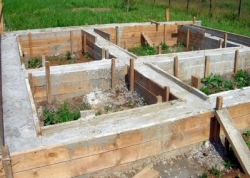
The foundation, first of all, is not just an underground part and base of the house, it acts as a transitional element between the uneven surface of the earth and the even plane of the box of the house. The quality of the erected house depends on the quality of this design. If the foundation is poorly built without observing the technology, then the house can collapse at any time, since all loads are transmitted from all other parts of the structure, like ceilings and walls, precisely through this design. Therefore, it is so important to know how to determine the quality of the foundation at home.
Content:
- Features of a quality foundation device
- Foundation device technologies
- Subtleties of checking the quality of the foundation
Features of a quality foundation device
The load on the foundation is equal to the value of the load on the soil itself. It’s good if you have a large granite plate under your house, which is already an unshakable for a million years. But in practice this is completely wrong! Therefore, it is necessary before starting the construction of a country house, to find out in more detail what type of soil in the area, as well as how it is characterized by properties.
When laying foundations, you can not do without preliminary engineering and survey work (at least in minimal volumes). Such surveys will help you understand whether the soil will be stable, whether there will be a distortion or landslide of the foundation, whether the basement will flood the basement during the period of spring floods. In general, remember that you can win nature and put the house in a place you love, the main thing is to know what to do in this or that case.
It is pretty good when the foundation is laid on the embankment of stones of natural origin: in this case, the reliability of the base under the house will not inspire anxiety, and also will not not be lifting the cost of the foundation. The most reliable are sandy homogeneous soils, which consist of coarse sand. With a properly installed foundation, uniform precipitation occurs in the ground and, as a rule, in the future, the base is not overwhelmed and does not experience strong loads from the soil.
Clay soils, dusty and fine -grained sand only in dry weather demonstrate approximate behavior. With a large amount of moisture, they become fluid, and in winter cold time, fusion occurs, and because of this they put pressure with great force on the construction of the foundation. And this suggests that it can distort the structure, and cracks may appear on the walls. To prevent this from happening, you need to take special measures, that is, to deepen the sole of the foundation below the freezing of the soil.
The most unfavorable option is a peat base, which is also found in our area. It is clear that only a madman who does not value the lives of loved ones and his own can put a capital structure on a peat. Nevertheless, if you have such an unsuccessful area, you need to remove the entire peat and the resulting foundation of the pit should be filled with sand, making a sand pillow with this.
Another important factor that affects the quality and device of the foundation is the design of the house itself. It is not necessary to be a master in the field of housing construction in order to understand: a relatively light frame house or a heavy brick cottage requires, of course, to lay the foundation of different approaches. In the case of large financial resources, you can build a huge reinforced concrete plate under a light structure, but the issue of reasonable savings will not leave anyone indifferent.
Technologies for the construction of foundations
Before characterizing the technologies for the installation of foundations, it is necessary to discard such an option as clogging powerful piles to great depths, because this method is excellent only during the construction of skyscrapers. It does not reach such radical methods of building in private housing construction. The most common designs are strip, columnar and slab foundations.
Plaet foundation
Complex heaving and bulk soil often requires that a monolithic reinforced concrete slab is brought under the structure. The reliability of the foundation with this design will increase, since in order to move such a foundation, incredible efforts are needed. But, of course, the reinforced concrete slab needs a large consumption of the material.
If the plate has a very large thickness, then the slab foundation will be in some cases even cheaper than the strip. But if the slab foundation is also buried to everything else, then, in addition to a large amount of concrete, it will also have to be made a lot of crushed stone and sand for the construction of the pillow.
Ribbon foundation
The most common option is the foundation of the tape type. The concrete foundation is made under the supporting structures inside and around the perimeter of the structure. It is not necessary to fill concrete at all, if necessary, such a base can be made from finished blocks and bricks. It is important to understand how to check the quality of the foundation for the house.
It happens that the strip foundations are produced by specialized ones, the sole of the foundation while lies below the depth of freezing by about twenty centimeters, and sometimes finely-and-deep-from the surface of the Earth by 50-70 centimeters. Typically, the upper part of the strip foundation is a basement, which is a Western, protruding or made flush with the outer wall of a residential building.
As a rule, rather heavy houses are installed on a strip foundation with varying degrees of deepening. If the house has a basement, a basement or a garage is located under the house, then you need to give preference to the strip foundation. Do in the case if the base base for soil serves as a retaining wall.
Column foundation
When the conditions allow, you can make a columnar foundation, while significantly saving on materials. See for yourself: in this case, the foundation is made not continuous, but point - the supporting structure only at certain reference points: in places of intersection of walls, under the supports of very loaded runs, in the corners. At the same time, building materials are needed much less than when building a strip or slab foundation, hence the savings.
Basically, the column foundation is used for frame, chopped or shield houses of small weight. The cheapest pillars are wooden, which are still used when it is necessary to build a light temporary structure. If you have to demolish the construction in a couple of years, and build something new in its place, then it makes no sense to spend money on expensive reinforced concrete, and then dismantle the foundation, it is very laborious and costly.
Pillars of the foundation
In addition to the listed varieties and completely different types of foundations are also used, and various new items appear in this traditional construction of construction every year. For example, on deep-free and difficult soils, sometimes a column-lental foundation is built. At the beginning, at first, wells are drilled to a depth, which is just below the level of freezing of the soil.
The lower part of such a well is expanded using a special plow. Next, the reinforcement is inserted into the wells and they are filled with concrete. Such a pillar is withstanded by a load of 5 and even 10 tons, and the most interesting thing is that even Arctic frost can not squeeze it out of the soil. Further, between the pillars in the usual formwork, a ribbon-ribbon is cast, which is reinforced and then placed at a short distance from the ground, taking into account that frosty soil flowering may happen.
Subtleties of checking the quality of the foundation
If the house has already been built, and you have crept in doubts about the quality of the foundation, or you buy a plot with the foundation and want to build your house on this basis, then you must carry out a technical survey of the base, since the future of your house depends on the quality of the foundation. It often happens that the owners took up the construction of the house, but they are not sure how well the foundation flows. In this case, the need to control the quality of the foundation arises, because there is a probability of the formation of cracks in concrete with direct piles into the ground.
Visual examination of the foundation
So, the first thing we do when checking the quality of the foundation is to visually inspect the structure. You have to make sure that the right foundation was made for the soil on which you are engaged in the construction of the house. After all, all types of foundations are specially designed for different conditions and strip, and monolithic, and in stilts.
The foundation is best checked, of course, after winter time due to the fact that the soil will pass a kind of test for defrosting-carbonation. So it will give the structure to the structure at least once to be wintering, in which case all the shortcomings will pop up.
A visual examination of the foundation is carried out in the following sequence:
- First you need to look at the soil around the foundation: if the earth has failed in some places, cracked or sagged, then you need to think, maybe the foundation was put without preliminary verification of the soil itself.
- The next action will be a check of the area and width of the base: the more it is, the respectively, the pressure is less on the ground.
- The presence of cracks in the floor, walls of the house or other deviations allow us to say that the base of the house is spoiled.
- Salt deposits on the walls of the foundation or flow on the basement walls indicate that the waterproofing is broken, or it is not at all. Therefore, it is also necessary to check the waterproofing, due to its absence, the foundation will absorb moisture from the soil, and this, of course, is fraught with consequences.
- In literally a couple of minutes, you can check the porosity of the foundation: how guards (compacted) concrete. Remember that the less you see air bubbles in it, the, respectively, it is better.
- It is necessary that a substrate for the foundation must be made, for example, a layer of crushed stone and sand should be laid out under a monolith plate. In order to make a check, it is there, you need to dig up the soil from the foundation from the foundation for 30-40 centimeters in depth. Also, they are sometimes laid in foam so that there is a warm foundation, and to keep your home warmth.
- The next step is to determine the quality of the material used to build the foundation. For the foundation, it is customary to use concrete of brands 200, and better 400. When buying a foam concrete of a brand 600, the thickness of the walls should reach 45 centimeters, when choosing a foam concrete 800, the wall thickness should be at least 68 centimeters, and when using a brand 1000 should be at least 94 centimeters .
- If you have not led to any results a superficial examination, if you have crept in the slightest doubt about the defect and integrity of the founding of the house, you should not make your way and call a specialist for examination. He will check the concrete compression. In this case, the masters with the hammer of Schmidt are called. He will be able to determine the degree of compression of this building material.

Foundation checking devices
To check the quality of the foundation, you can use a special device called a device for diagnosing piles. The principle of operation of such an apparatus is quite simple, the method of seismic spectral flaw detector is based on its basis: the operator strikes a special hammer in design, which fixes the force of exposure, and a special vibration sensor is responsible for fixing the oscillations that are reflected from internal defects and edges of the structure in it.
A much less time will take such an examination of time, and the human factor will be reduced to almost a minimum: flaws that the eye can look through, the automation will not miss. Such equipment is not only intended for pile quality control. It can also be examined by other supporting elements, for example, ceilings and columns. Similar devices, as a rule, can perform the functions of the sonar (sound detection of malfunctions).
Thus, you know how important a qualitatively executed foundation is. Remember that before pouring the grounds for the home, you must: do engineering and geological surveillance, develop a project of a house and foundation, perform a design calculation of the foundation and grounds for power load, apply only high-quality building materials and specialized equipment, as well as observe all technologies and standards .

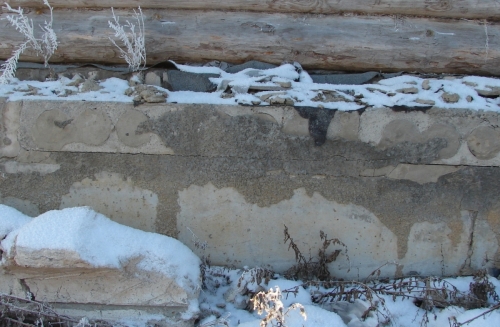
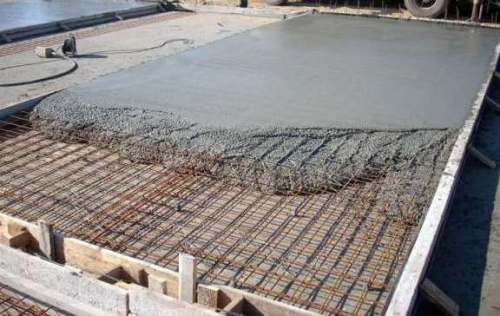
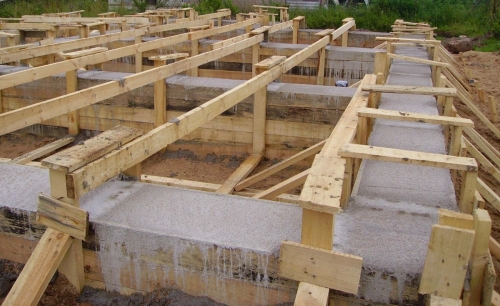
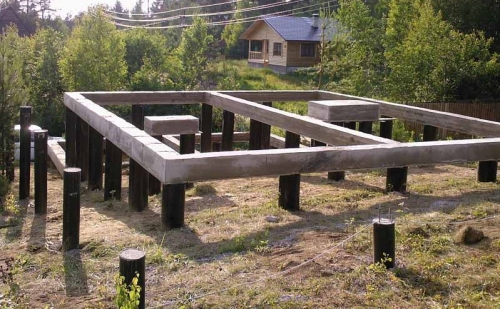
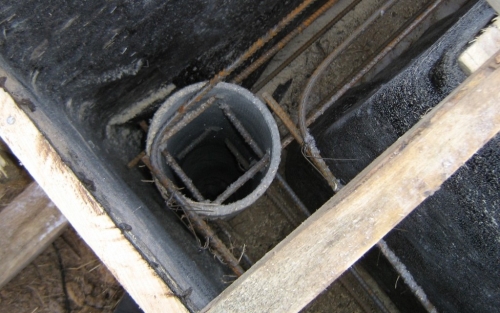
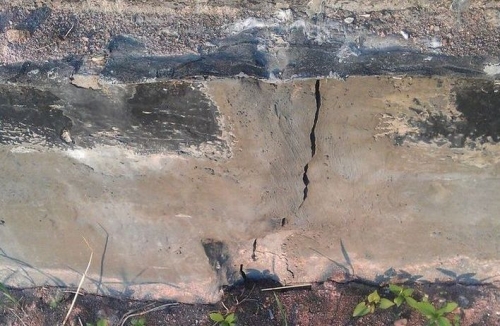
28 days passed and the foundation
28 days passed and the foundation is still raw what to do?